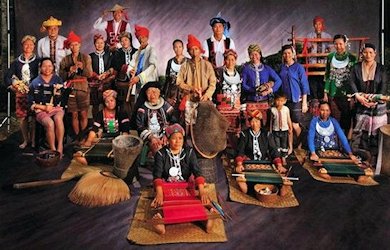|
27. Chinese Nationalities (Li Minority) -- Minorities by Alphabetic Sequence |
||

|

|

|
| Li Ladies | Li Ladies | Li Ladies |
|
The Li ethnic group consists of five branches: the Qi, Ha, Run, Sai and Meifu. Their ancestors can be traced back to the Luoyue people - a branch of the ancient Baiyue tribe who once lived in south China. Early before the Qin and Han periods, ancestors of Li ethnic group immigrated into Hainan Island from Guangdong and Guangxi provinces.
At first, they only lived in the monticule and
mesa areas near the gulfs and rivers, later, they gradually moved to all parts
of the Island.
During the Sui Dynasty, they were called as "Liliao" and after
the Song Dynasty; "Li ethnic group" was formally used to address them. Li
people call themselves "Sai" people. Having inhabited Hainan for over 3000
years, they were believed to be the earliest settlers of Hainan.
|
||
| Return to Alphabetic List On to No. 28 Minority Lisu ⇨ | ||